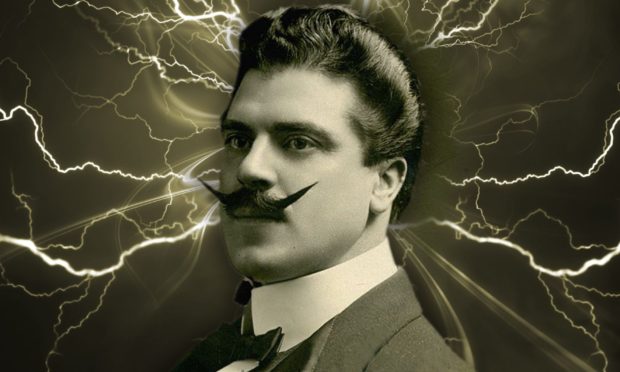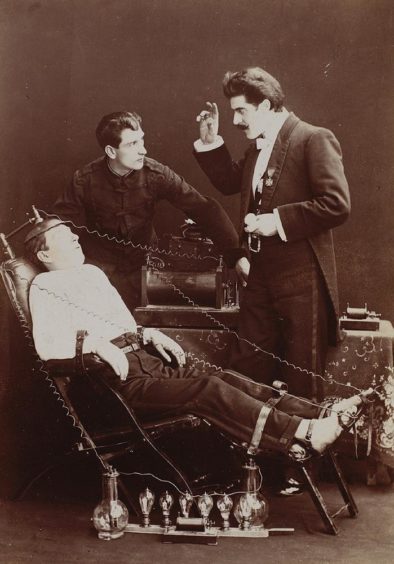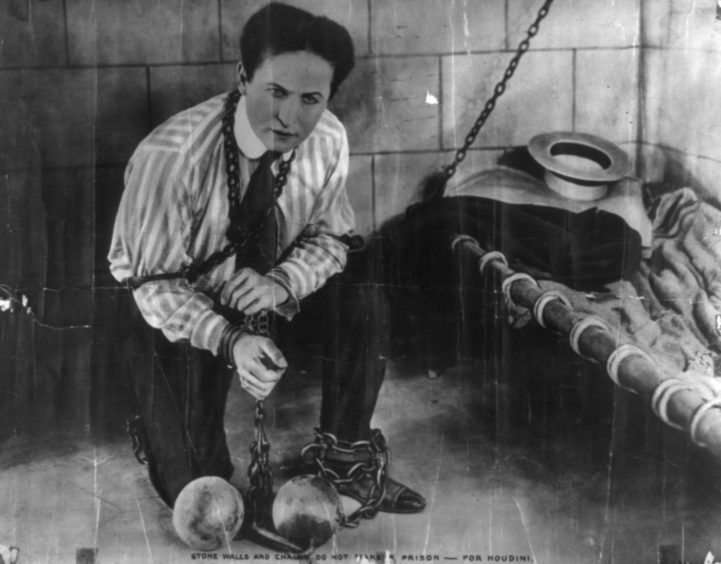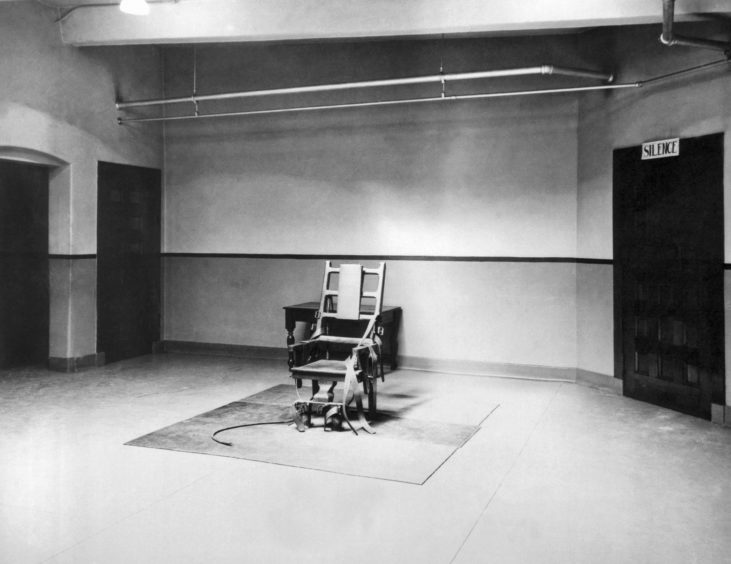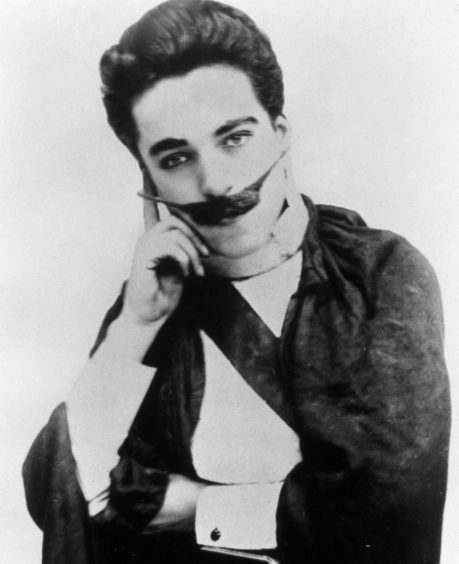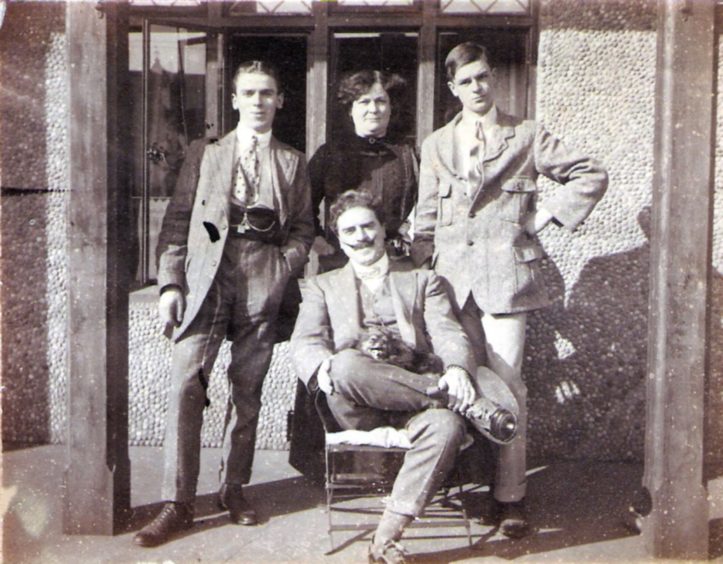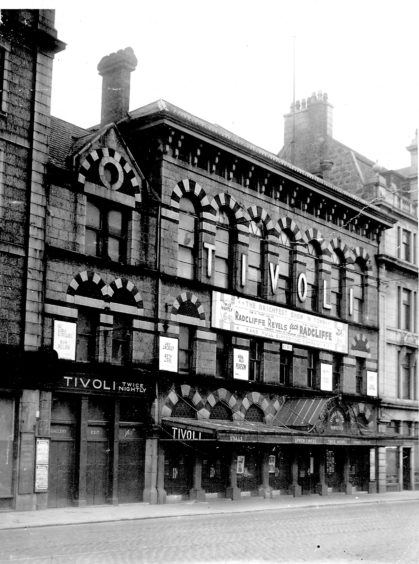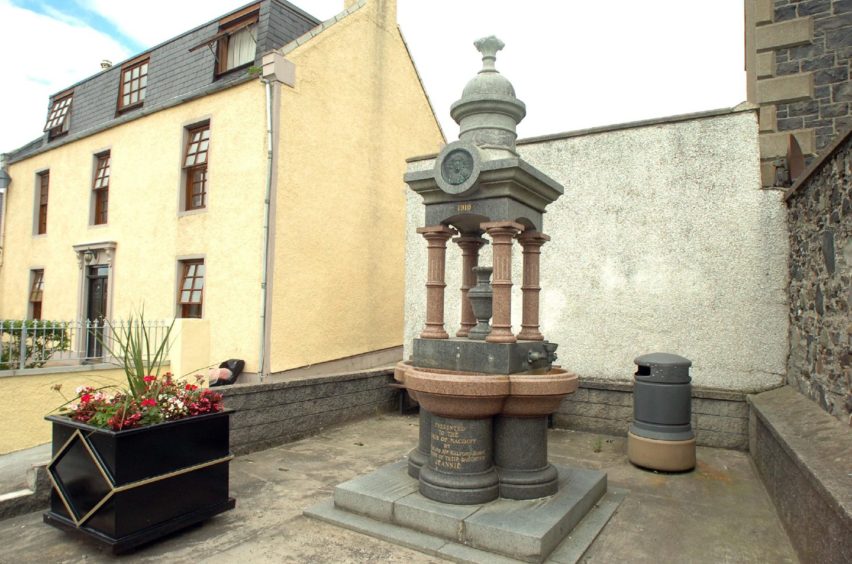It is one of the great mysteries in the history of magic… where is the infamous north-east illusionist Walford Bodie’s electric chair?
It is now 100 years since Harry Houdini presented the grisly souvenir – allegedly from America’s notorious Sing Sing Prison – to the Macduff-born showman, known as the “Electrical Wizard Of The North”.
But its whereabouts have been lost in the mist of times, despite the best efforts to track it down by many people – including Aberdeen-based magician and escapologist Dave Goulding.
Houdini made it himself
“We are kind of resigned to the idea that it’s either firewood, or a granny in Banff has put rockers on it and is watching the telly,” said Dave, a magic historian who has recently released a book, Magic Now And Again, which includes a chapter on Bodie’s missing chair.
“But there have been entire books and all sorts written just on this. My theory is that Houdini actually made it himself.”
So Bodie’s famed Sing Sing chair was actually a Houdini fake?
“It was a curiosity… like shrunken heads aren’t actually shrunken heads,” said Dave. “At Sing Sing they always had two electric chairs and they know where both are, they were never sold and never released.”
However, fake or not, the lost chair is still a sought-after prize with collectors willing to pay handsomely if it can be found.
Adds to the mythos
“Houdini owned it, then passed it on to Bodie. There is a company in the States, currently selling in a little frame a single padlock key that has authentication it was part of Houdini’s collection,” said Dave.
“He had about 5,000 or more keys. Someone bought them and is selling them off for $2,000 each. If a padlock key is $2,000 imagine how much it would be for a chair Houdini made or owned, whether it was the Sing Sing electric chair or not.”
The missing chair just adds to the mythos of Bodie and his turbulent career.
At the turn of the 19th century, he was at the height of his fame as a hypnotist, ventriloquist and stage magician with his jaw-dropping act including his cage of death and an electric chair which he claimed would put 30,000 volts of electricity through his body, in a vivid display of sparks and crackling lightning bolts.
He attracted huge crowds and sold out venues wherever he played, including the Tivoli in Aberdeen. He featured in newsreels shot at fairs and events around the UK.
Houdini – who was also a great admirer of the north-east’s other acclaimed magician of the day, John Henry Anderson – cited Bodie as both a friend and an inspiration, leading to the gift of the electric chair in 1920.
Looked the part
“Bodie was a brilliant showman and he looked the part,” said Dave. “He was fairly well-built, a good-looking guy, with his sticky-up moustache. There was a cartoon series called Mandrake The Magician in newspapers and they say that was based on him.
“He was that famous that Charlie Chaplin, even in his Hollywood days, did an impression of Walford Bodie. Chaplin did it on stage in London in his variety days, but when he moved over to America and Bodie became popular over there, he got his old act out. And even the American public recognised him.”
Bodie had been interested in magic since an early age and cut his performing teeth on shows around Aberdeen, including Banff and Stonehaven with illusions and sleight of hand.
But his full time work with the National Telephone Company gave him an understanding of electricity and how it could be used in his act, said Dave.
“Because of his knowledge, even though it was in the embryonic time for it, he knew more than most… and it could be passed off as magic.
Bought an X-ray machine
“He would pass huge voltages through himself because he knew well enough that it wasn’t just the voltage that would kill you but the charge, so no amps, no problem. He would set up what we now know as a Faraday Cage, he would use a lot of static electricity.
“He bought an X-ray machine, believe it or not. Imagine a time when theatres are still lit by gas and he’s showing an X-ray machine, quite happily not realising the potential problems.”
Bodie was the quintessential showman and an early adapter of audience participation. He would invite those brave enough out of their chairs to try out the electric chair and even give some a jolt of voltage to “prove” the reality of his act.
His act drew criticism with some accusations of it being macabre. To which he is reputed to have said: “I’ve got a living to make, to put it plainly; there’s more money in shocking and terrifying than in edifying.”
Then, as now, sometimes audience members would prove to be a handful, trying to get the better of Bodie and his illusions on stage. But he had a shocking way of dealing with would-be hecklers.
In an interview in 1897, he said: “Why, then an extra shock of electricity or some such pleasantry will bring one’s mischievous friend to his senses, put the audience in high good humour and restore the equilibrium of the entertainment.”
Bodie not only performed illusions and magic, but he also claimed to use electricity and hypnotism to cure all manner of ailments and disabilities, attracting hundreds of people looking for help.
Dave said: “He would use electrical stimulation in his cures. There are pictures of him with a guy with a withered arm who couldn’t lift a feather, holding a big weight, almost like a circus thing with ‘one ton’ written on it.”
It was his claims to medical prowess – he styled himself Dr Walford Bodie MD – that led to infamy and accusations of quackery
“You can call yourself Dr Walford Bodie and people took that with a pinch of salt even then. It’s like a Punch and Judy guy called ‘Professor’. But then he started putting MD after his name. People who had worked seven years to become a doctor didn’t like someone putting MD after their name,” said Dave.
Stood for merry devil
“He claimed that it stood for ‘merry devil’ but that didn’t wash. He did shows where he got booed off the stage, he got rushed by medical students who had been lubricating themselves with drink. He started a riot in a theatre in Glasgow, where it all kicked off.”
Eventually, the medical profession had enough and and the Medical Defence Union took Bodie to court over his use of the initials.
Ever the showman, Bodie used that high profile trial to push his own profile even higher, producing posters claiming sworn evidence backed his claim of being able to pass 30,000 volts through his body.
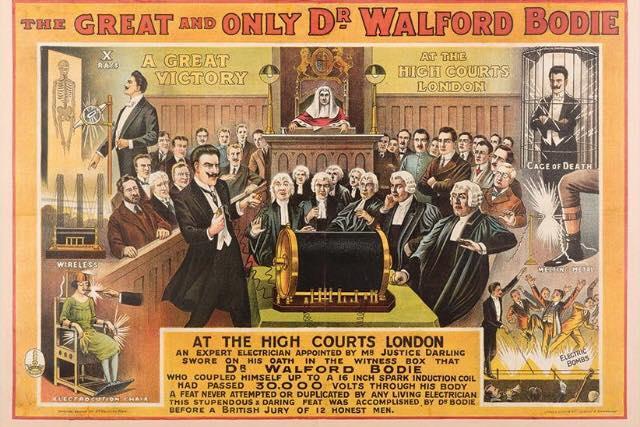
Dave said: “I’m not saying he was always a fibber and a charlatan and a scallywag… but he was. He would make these great claims that weren’t true. He would write testimonials to himself.”
But for all the scandal that embroiled him – he faced numerous lawsuits in his lifetime – Bodie had a kinder and philanthropic side. In 1905 he moved back to Macduff, building a family home, the Manor House. He used his riches to help the town. He paid for public baths to be built and contributed to the creation of Tarlair Golf Course. He was the first person to tee off on the course when it opened in 1926.
He also contributed a fountain to the town in memory of his daughter who died from TB.
However, during the 30s, Bodie’s career and fame waned and he played ever smaller venues. In 1939 he collapsed on stage in Blackpool and never recovered.
His death was announced in the Press & Journal, which relived his glory years, praising him as one of the best-known music hall entertainers and a pioneer of showmanship.
His obituary said: “His entrance on the stage was the signal for the brass to blare, the drums to crash and the sparks to fly. His method was to not win his audience, but to lord it over them – to make them feel honoured to be in such a great man’s presence.”
Bespoke the dandy
It also spoke of how his career might have diminished against the onslaught of cinema, but he was still a presence in person.
“When he was in Aberdeen earlier this year, the grand manner was still there,” said the P&J. “He carried a stick with an enormous gold top to it, his monocle shone as fiercely as ever and the upturned moustache still bespoke the dandy.”
Today Bodie’s name is not as well-known as those who lauded and imitated him, Houdini and Chaplain.
“I think it’s purely because of the controversy around him,” said Dave, adding he thinks Bodie is ripe for redemption. “He was a fantastic entertainer and that’s what it is all about. That’s what we should remember him as and he is one of the greats from this area.”
